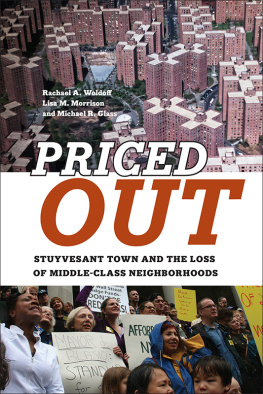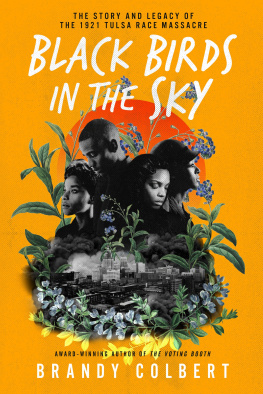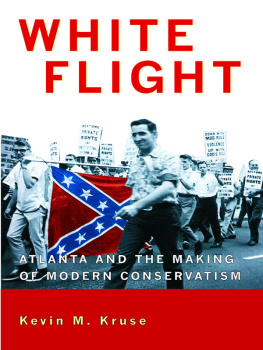Acknowledgments
This research project would not have been possible without the encouragement and assistance of my husband, Rob Litchfield. I extend my loving thanks to him for collaborating with me on this endeavor, as with everything. He indulged me in my daydreams about embarking on a project like this and urged me to dive in and get started. He was my companion in travel, my trusted listener and reader, and my dutiful editor. Of course, he is also so much more. I would also like to thank my parents, Myra and Paul Segal, for sparking my interest in neighborhoods at a young age by raising me in the city. Thanks also to my late grandmother, Estelle Zeldin.
This work was supported by a grant from West Virginia University. I would like to thank Fred King and my colleagues in the Division of Sociology and Anthropology at West Virginia University for their assistance and support. I am also grateful for the effort and interest of my research assistants, who helped me to transcribe many hours of interviews: Larisha Campbell, Katelyn Casten, Seth Cox, Katie Davis, Jamie Farren, Loren Friend, Christina Kress, Katasha Leggett, Dawn Lozzi, Victoria Marra, Jennifer Mitchell, Robyn Popper, Teresa Sparklin, and Melissa Tressler. Thanks also to Andrew Cognard-Black and Sarah Woldoff-Kern, whose careful readings of chapters yielded significant improvements.
I extend thanks to the following colleagues from other institutions, who were very helpful throughout the process, offering encouragement, providing comments, engaging in insightful discussions, and sharing their support during the writing of the book: Elijah Anderson, Korrie Edwards, Herbert Gans, Seth Ovadia, and Mary Pattillo. I am thankful to have colleagues who share my passion for neighborhood and urban research and who boost my efforts at quality work.
I especially want to thank my editors from Cornell University Press. Peter Wissoker listened to my ideas at an early stage in the process, and Peter Potter provided guidance toward the end. Their interest, dedication, support, and advice have been invaluable. Ange Romeo-Hall managed the editing and production of the book, John Raymond copyedited the manuscript, and Victoria Baker carefully and thoughtfully indexed the content.
Above all, I wish to express my deepest gratitude to the residents of Parkmont for generously sharing their precious time and trusting me with their stories.
Introduction
WHAT HAPPENS TO A NEIGHBORHOOD AFTER WHITE FLIGHT?
The change was quick. The only thing I can tell you is I wasnt even aware of anything. A few black families moved onto our street, and it didnt bother me. And suddenly, I walk up to the bank, and when Im in line, Im the only white person there. I get on the bus, and Im the only white person getting on the bus. Plus, I can tell you one other thing that also surprised me. The stores on the stripa lot of them closed up. For instance, the beauty shop I went to for so many years, they closed. He retired.
Rose Berger, stayer, aged seventy-five
As more houses went up for sale, people began to run, I guess because they were afraid of the values of their property. Mainly though, it was younger people that were moving, not the older people. The younger people moved, and they said if theyre gonna move, theyre gonna do it now.
Dolores Duskin, stayer, aged seventy-nine
It is a typical afternoon in Parkmont. I am there for the day, visiting with residents in their homes, on their patios, on the streets, in schools, at barbershops and hair salons, and at the local synagogue. As I move around the neighborhood, I notice real estate agents showing homes to black families. As recently as 1990 the community was only 2 percent black and yet today, ten years after the collection of 2000 census data, it appears that the community contains very few white residents.
Parkmont is a modern U.S. community that has experienced firsthand the phenomenon of white flight. Settled in the late 1940s as a white working-class neighborhood in a northeastern city, it is not far from downtown, and it is close to the wealthy suburbs. In the 1980s whites began to leave in the wake of the citys efforts to enforce racial integration. The exodus was most pronounced in the 1990s, and by the year 2000 white flight was largely complete (see table 1in appendix) with only a small number of remaining whites, mostly senior citizens, immigrants, and unemployed or disabled people. In short, Parkmont had become a majority-black neighborhood by the start of the new millennium.
The story of Parkmont is a familiar one to those living in U.S. cities, from Boston and Baltimore to Cleveland and Detroit, that have seen residential areas abandoned by middle-class and working-class whites. Between 1990 and 2000, American cities lost white population. For the first time in history, non-Hispanic whites now represent less than half the population in the largest central cities of the United States, going from 52 percent in 1990 to 44 percent in 2000. Analyses of neighborhood data show that out of the 5,753 census tracts in which more than 60 percent of the residents were non-Hispanic whites in 1990, slightly more than one out of every five (20.1%) experienced a decline of more than 20 percentage points in the proportion of whites between 1990 and 2000. When whites leave the city, they also leave neighborhoods, fundamentally changing the character of entire communities.
In this book I present an ethnographic study of Parkmont, focusing on the changing racial makeup of the community. I explore what happened in Parkmont after white flight had largely run its course and the blacks who had arrived first, often called pioneers, were forced to adjust to their new residential environment. Confronted with the loss of relationships with their longer-term white neighbors, alarming signs of community decline (including a failing school that was demographically transforming), and conflicts with newer incoming black neighbors, many pioneers decided to flee Parkmont (if they could) and move to other neighborhoods. This led to a second wave of change that has received less attention in the scholarship on urban communitieswhat I (and others) call black flight. Taking my cue from Parkmont, my argument is that we cannot fully understand white flight and its ramifications without first coming to terms with the cultural and social dynamics that occur in the aftermath of white residents leaving a community.
Updating and Extending the White-Flight Narrative
White flight is a familiar theme to just about anyone who has read news stories, articles, or books about the plight of American cities since World War II. Because it touches on race, class, urban/suburban divisions, and a host of other structural and cultural issues, white flight has the potential to generate controversy from all quarters. Some view it as a concern from a bygone era when suburbanization was a new mode of living, offering a respite for whites fleeing both urban crisis and black in-migration. Indeed, much of the research on white-flight communities focuses on historical incidents of black-white ethnic tensions in the period between 1950 and 1980, and this work often foregrounds the perspectives of whites who felt left behind or dominated by fear. A number of studies examine extreme situations, such as sexually violent wilding incidents and ghettoization in the South after white flight. Despite the fact that many cities and neighborhoods remain entrenched in segregation or else turn over rather quickly when integration occurs, some research has highlighted the declines in racial segregation, albeit slow, that have occurred in multiethnic cities and neighborhoods. Recent cases of wealthy whites reentering urban neighborhoods have even led some optimists to proclaim the end of white flight. The story of Parkmont reminds us that even today, when whites see people of color entering their communities, they flee. Whether because of racial factors or nonracial suburban pulls and urban pushes, white flight, a massive migration of whites to the suburbs, is still occurring. But Parkmont also reminds us that white flight is only one part of the story.







